Australian Tropical Rainforest Plants - Online edition
Cardwellia sublimis F.Muell.

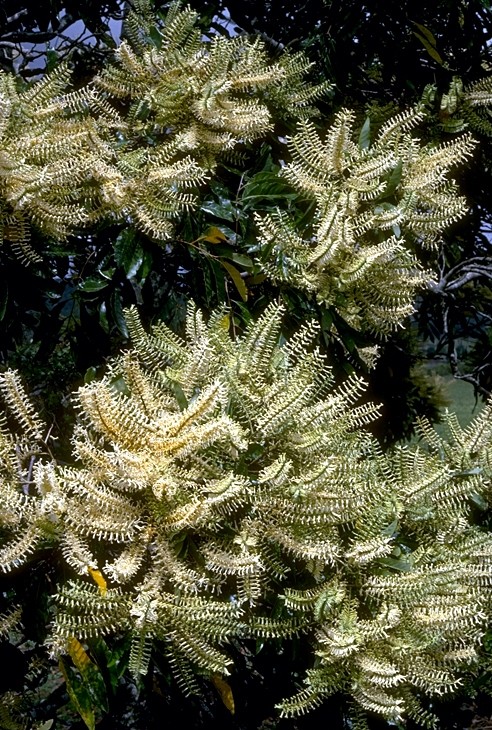


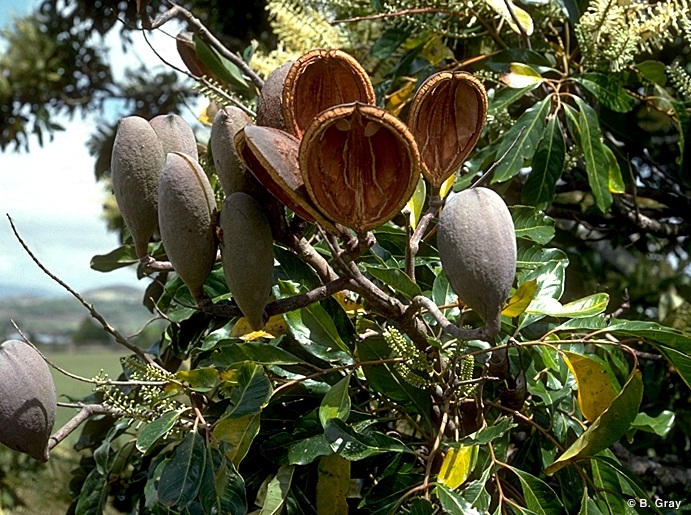
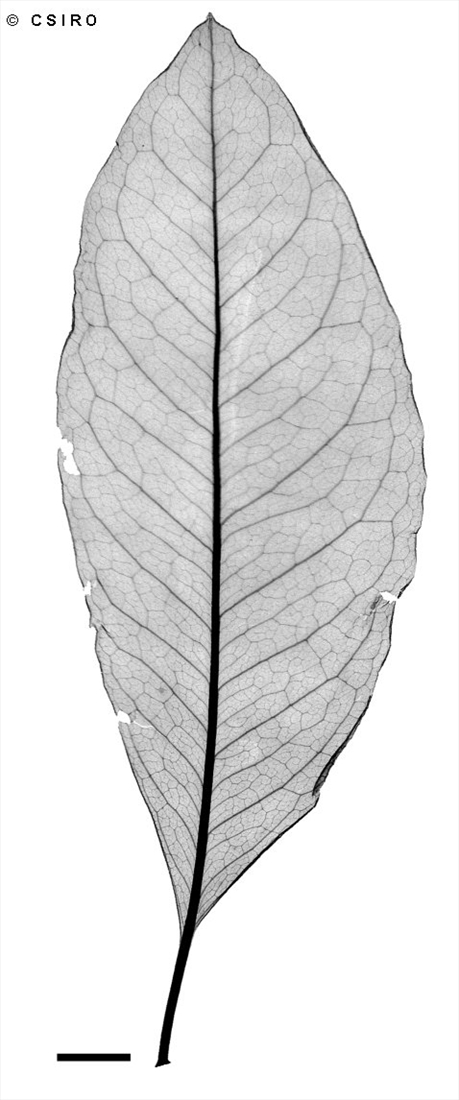

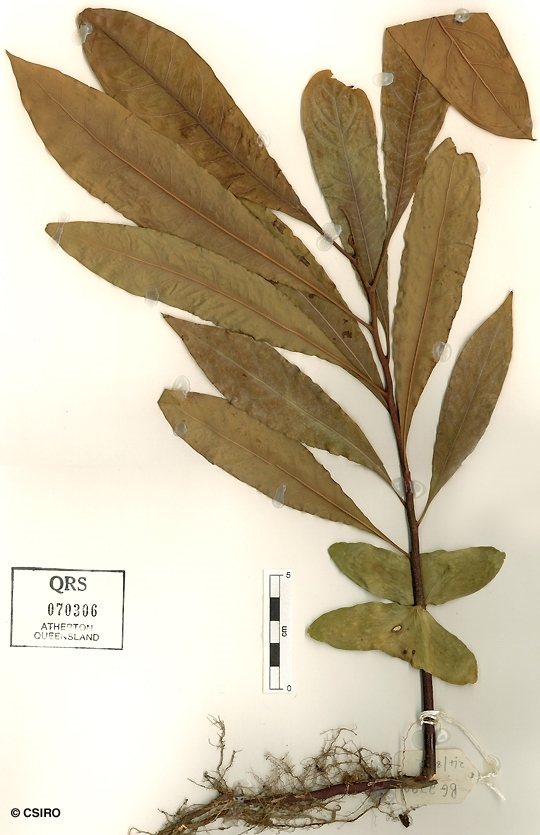
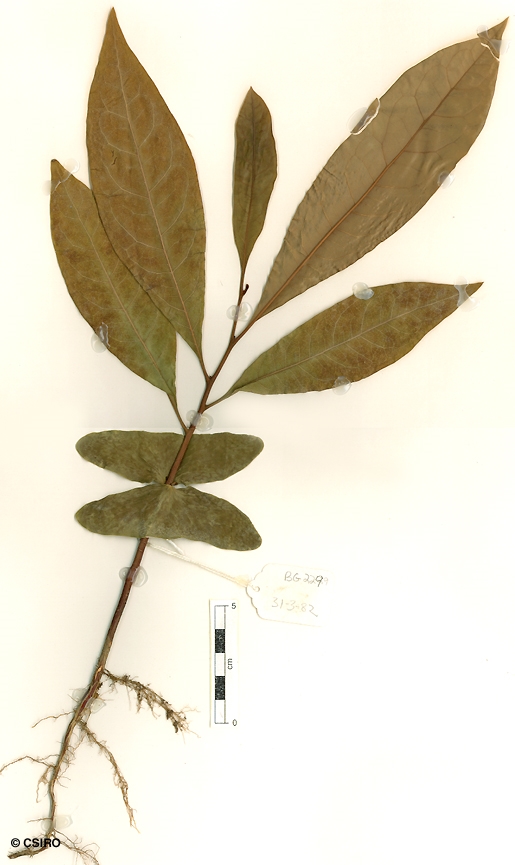
Mueller, F.J.H. von (1865) Fragmenta Phytographiae Australiae 5: 24. Type: In montibus silvaticis circum urbem Cardwell portus Rockinghams Bay frequens. J. Dallachy?.
Northern Silky Oak; Oak, Bull; Silky Oak; Oak, Silky; Oak; Lacewood; Bull Oak; Oak, Northern Silky
Oak grain in the wood. Blaze with a lace-like pattern corresponding to the oak grain in the wood. Dead bark layer generally thin, often peeling off fairly readily.
Oak grain in the twigs. Numerous circular, pale brown lenticels on the twigs. Leaflets about 9-18 x 4-7 cm, with a brownish or silvery sheen on the underside. Young partly expanded shoots look like miniature, dark, partly clenched human hands.
Flowers in pairs in the inflorescence, each flower sessile, but pairs of flowers pedunculate. Tepals about 10-18 mm long. Hypogynous glands four (two large & two small). Ovules about 10-14 per ovary.
This is one of the most useful timber trees in North Queensland rainforests. The timber can be used as a beautiful cabinet wood which is easy to work, cuts and polishes well to reveal a beautiful oak grain on both back-cut and quarter-cut boards. It is also a useful and moderately durable wood and many homes in North Queensland were largely constructed of this species. Many parts of the house utilize C. sublimis from the framing to the interior and exterior cladding. Attempts to grow this species in plantations are not encouraging.
Unripe fruit is eaten by Sulphur Crested Cockatoos.
A very good timber for the manufacture of window frames, a useful carving timber. Swain (1928).
Although very large in nature, open cultivated trees have excellent potential for parks and street trees. The showy panicles of cream flowers are followed by distinctive large fruits.
Wood specific gravity 0.56 Cause et al. (1989).





